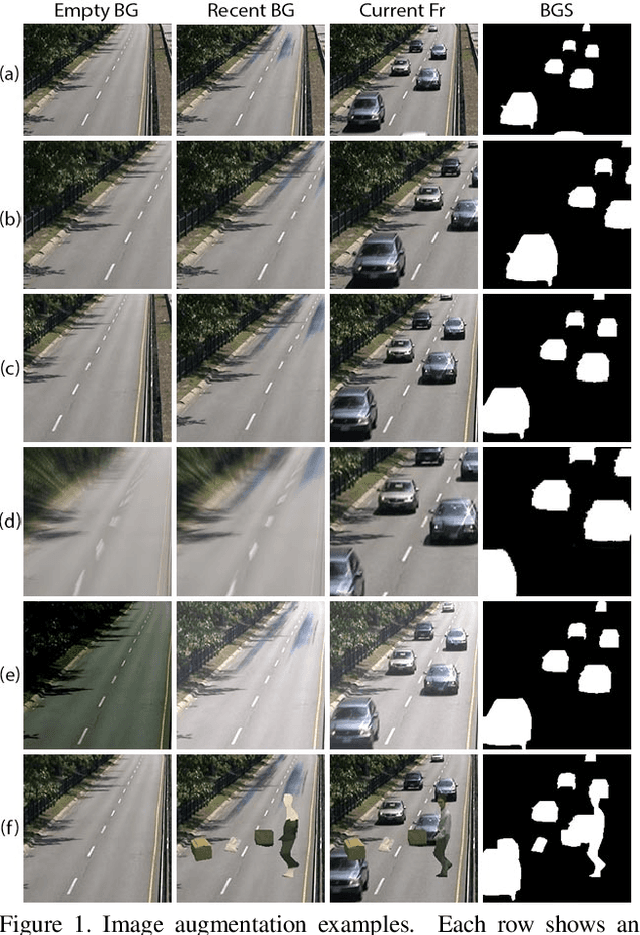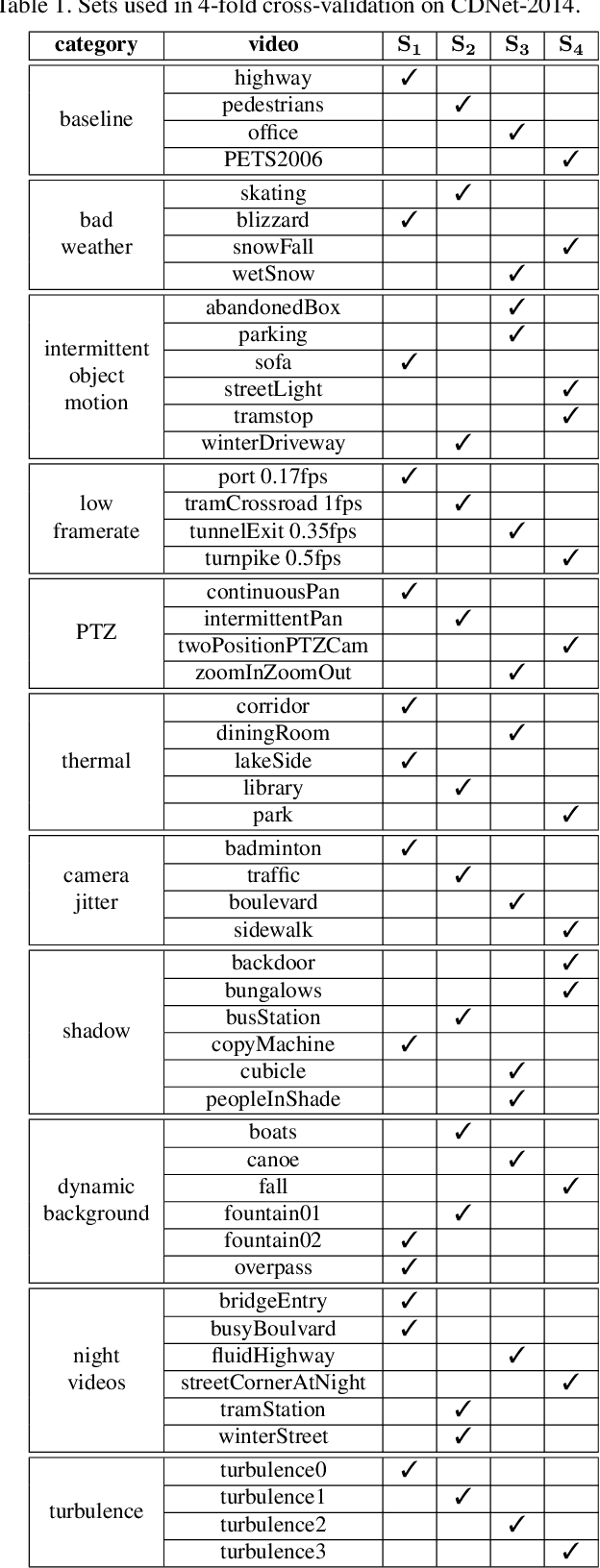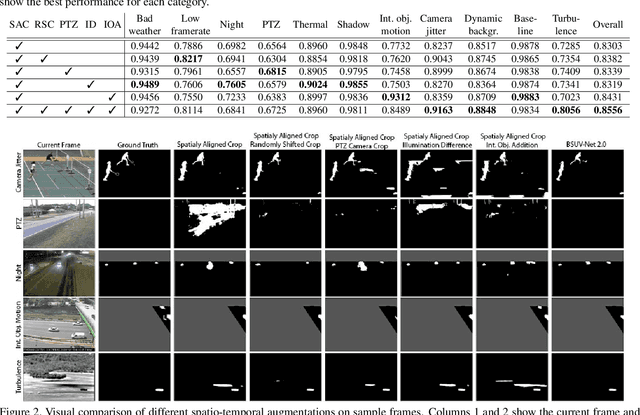BSUV-Net 2.0: Spatio-Temporal Data Augmentations for Video-Agnostic Supervised Background Subtraction
Paper and Code
Feb 24, 2021



Background subtraction (BGS) is a fundamental video processing task which is a key component of many applications. Deep learning-based supervised algorithms achieve very good perforamnce in BGS, however, most of these algorithms are optimized for either a specific video or a group of videos, and their performance decreases dramatically when applied to unseen videos. Recently, several papers addressed this problem and proposed video-agnostic supervised BGS algorithms. However, nearly all of the data augmentations used in these algorithms are limited to the spatial domain and do not account for temporal variations that naturally occur in video data. In this work, we introduce spatio-temporal data augmentations and apply them to one of the leading video-agnostic BGS algorithms, BSUV-Net. We also introduce a new cross-validation training and evaluation strategy for the CDNet-2014 dataset that makes it possible to fairly and easily compare the performance of various video-agnostic supervised BGS algorithms. Our new model trained using the proposed data augmentations, named BSUV-Net 2.0, significantly outperforms state-of-the-art algorithms evaluated on unseen videos of CDNet-2014. We also evaluate the cross-dataset generalization capacity of BSUV-Net 2.0 by training it solely on CDNet-2014 videos and evaluating its performance on LASIESTA dataset. Overall, BSUV-Net 2.0 provides a ~5% improvement in the F-score over state-of-the-art methods on unseen videos of CDNet-2014 and LASIESTA datasets. Furthermore, we develop a real-time variant of our model, that we call Fast BSUV-Net 2.0, whose performance is close to the state of the art.
 Add to Chrome
Add to Chrome Add to Firefox
Add to Firefox Add to Edge
Add to Edge